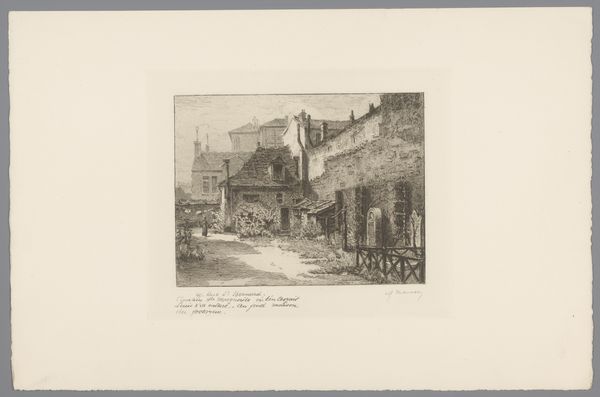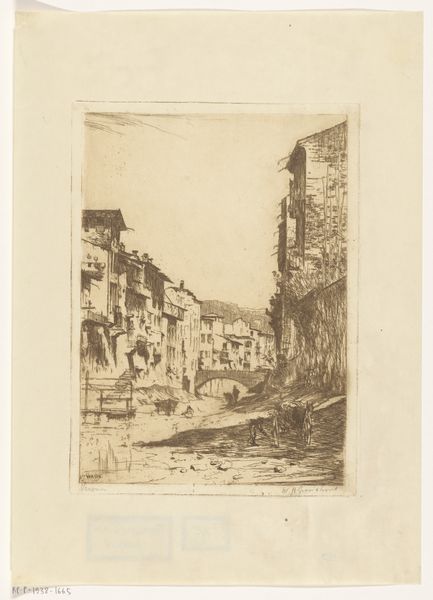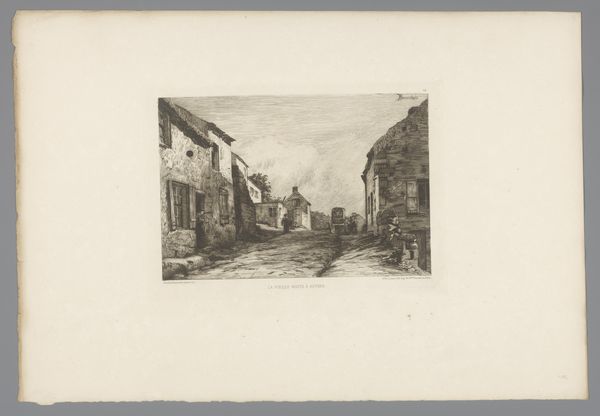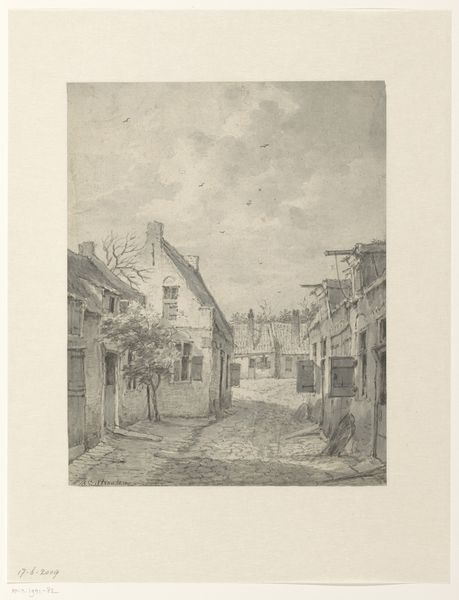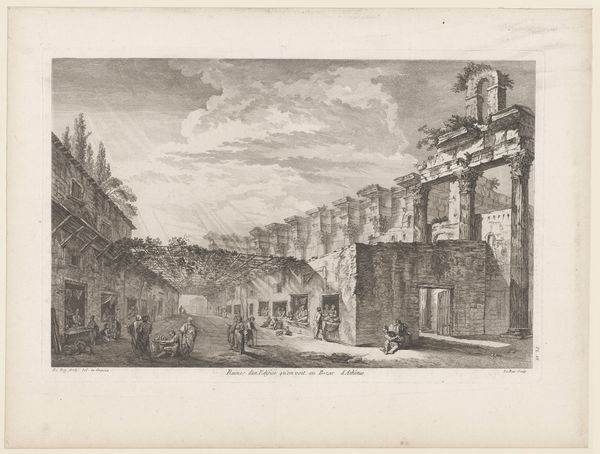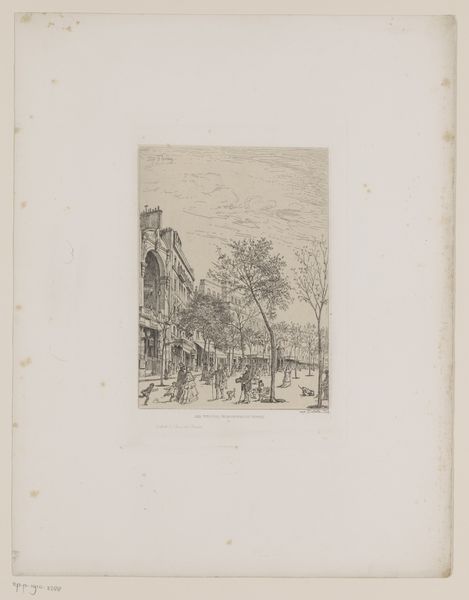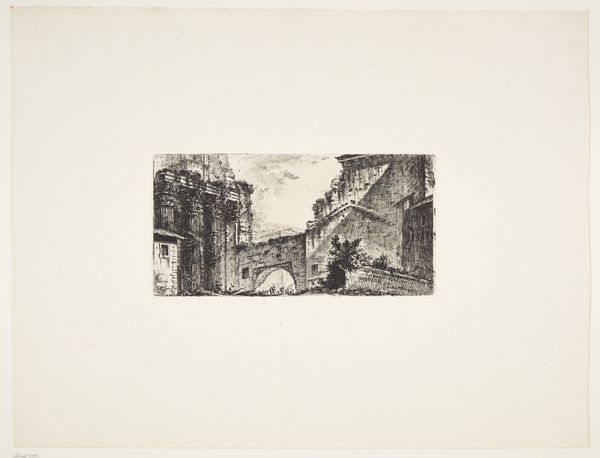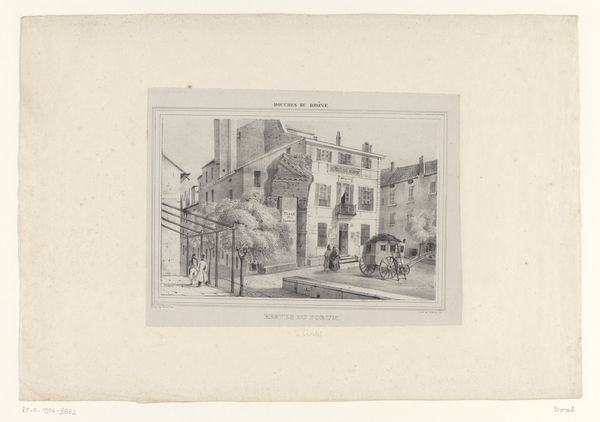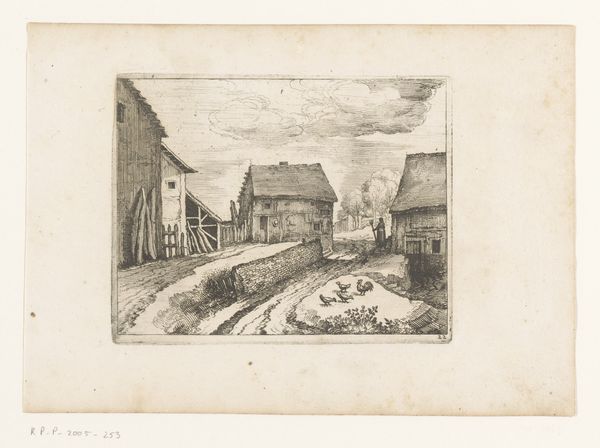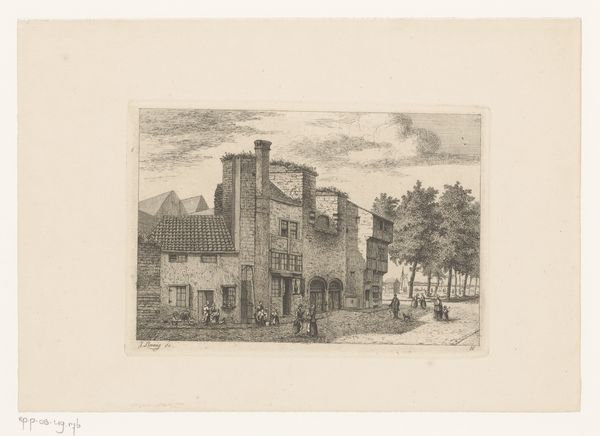
Stadsgezicht met de crypte van de Sint-Walburgiskerk in Antwerpen 1868
0:00
0:00
print, etching, engraving
#
ink paper printed
# print
#
etching
#
light coloured
#
old engraving style
#
white palette
#
cityscape
#
street
#
engraving
#
realism
Dimensions: height 128 mm, width 181 mm
Copyright: Rijks Museum: Open Domain
Jean Théodore Joseph Linnig created this print of the crypt of the Sint-Walburgiskerk in Antwerp using etching, a printmaking technique that democratized image production. Linnig would have coated a metal plate with wax, then scratched an image into the wax with a sharp needle, exposing the metal. Immersing the plate in acid would bite away at the exposed lines, creating grooves. The deeper the bite, the more ink the groove would hold. After removing the wax, the plate was inked and pressed onto paper. The material qualities of the etching process lend themselves well to the architectural subject matter. Look closely and you can see how the crisp lines of the etching capture the textures of stone, brick, and tile. This attention to the materiality of the built environment is a hallmark of Linnig’s work. The etching’s multiple lines also emphasize the time and labor that goes into both its production and that of the crypt itself. By focusing on process, we can appreciate how Linnig’s print bridges the gap between fine art and the skilled crafts of architecture and printmaking.
Comments
No comments
Be the first to comment and join the conversation on the ultimate creative platform.
